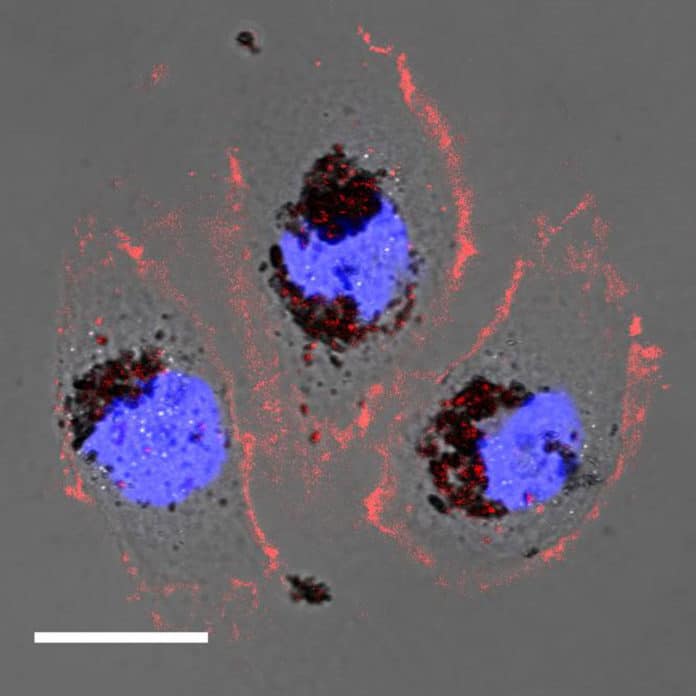Northwestern University scientists have developed a new form of melanin enriched with selenium called selenomelanin. It is a new biomaterial that acts as a shield to protect human tissue against harmful radiation.
Melanin, best known for pigmentation, also provides valuable protection from radiation. Five kinds of melanin have been observed in nature, with pheomelanin (the pigment in red hair) shown to absorb X-rays more efficiently than the more common eumelanin. It is lighter and more flexible than traditional radioprotective materials like lead.
Melanin samples are currently in orbit at the International Space Station, being studied by another research team for the material’s response to radiation exposure. Recent studies have focused on pheomelanin, which contains sulfur, as the best candidate for that purpose.
This new study proposed that this new kind of melanin could offer better protection against X-rays. Scientists synthesized it and used it to treat living cells. For comparison, they also prepared cells treated with synthetic pheomelanin and eumelanin, as well as cells with no protective melanin. After receiving a dose of radiation that would be lethal to a human being, only the cells treated with selenomelanin still exhibited a normal cell cycle.
Northwestern‘s Nathan Gianneschi, who led the research, said, “Our results demonstrated that selenomelanin offers superior protection from radiation. We also found that it was easier to synthesize selenomelanin than pheomelanin, and what we created was closer than synthetic pheomelanin to the melanin found in nature.”
In experiments with bacteria, scientists found that the selenomelanin can be biosynthesized. It means live cells fed with appropriate nutrients can then produce selenomelanin on their own — and retain its radioprotective properties.
Although scientists synthesized selenomelanin in their lab, they believe that it may be already present in nature.
Gianneschi said, “With an abundant source of selenium in the environment, some organisms may have been able to adapt to extreme circumstances such radiation through the beneficial effects of selenomelanin.”
Cao said, “Our work points to the possibility that melanin may act as a repository for selenium, helping ensure that organisms benefit from it. Selenomelanin may play an important role in how selenium is metabolized and distributed biologically. It’s an area for further investigation.”
“This new biomaterial could be applied to a person’s skin, like a melanin-based sunscreen. It could also be used as a protective film to shield materials from radiation while in transit.”
Journal Reference:
- Wei Cao et al. Selenomelanin: An Abiotic Selenium Analogue of Pheomelanin. American Chemical Society. DOI: 10.1021/jacs.0c05573
